The power profile of a Wind Turbine vs wind speed does not match the power profile of a DC generator in RED below and therefore if it were loaded, would stall the turbine.
 The generator will have some frictional load but nothing else unless current=torque is drawn. Maximum Power Transfer Theorem applies to both mechanics and electrical systems which states that the Impedances must be matched at all times to transfer maximum power.
The generator will have some frictional load but nothing else unless current=torque is drawn. Maximum Power Transfer Theorem applies to both mechanics and electrical systems which states that the Impedances must be matched at all times to transfer maximum power.
For PV solar cells which act as current sources with an open cct voltage a, Voc and a short circuit current Isc, that impedance is Voc/Isc=Zpv.
For a battery the maximum power is not safe for more than xx seconds at a time as this creates too much outgassing and temp. rise. For a car battery the CCA rating is 30 seconds like in the coldest weather with a hardened oil friction engine turn an engine slowly up to the CCA current rating where the voltage drops from 12 to 7V during rotation at the CCA rating sustained for only 30 seconds.
For a wind generator, it has no torque to drive a generator until a threshold RPM then that has a torque and power curve vs RPM that is more quadratic.
The power drain from a battery charger depends on CC or CV so it is more flat power during CC mode or slightly rising then declining in CV mode as current declines.
So a Maximum Power Point Tracking (MPPT) is need that hunts or has a smart algorithm to regulate the load to match the product of the Turbine * DC Generator * Battery Charger. I suspect this looks like a 0 curve up to x RPM then a steep linear curve up to the RPM that matches the desired wind speed to max power of the generator. Inertial or friction speed brakes are need to govern over-speed or using the generator into a short circuit if not power is needed.
This is a custom Engineering challenge to define each of these interface specifications to match the Impedance of the load to satisfy both the Turbine and the batteries. The result is specifications that define each interface.
edit
It sounds more complicated than a basic solution.
If the DC voltage out is matched to the battery charger at some adequate RPM then the charger will regulate the turbine RPM to that speed. It may not be optimal power but at least it will start no load until it reaches the charger Vmin enable threshold.
Then a means to enable higher RPM with wind speed is needed.
If the generator has lower impedance than the load, the RPM will increase. If the SMPS charger has lower impedance then the RPM will decrease.
p.s.
My 1st design was a VLF Doppler GPS used in Arctic Ocean floating-automated weather station in 1976 with a 750W vertical axis Wind Turbine that operated at 5 MPH start speed.
